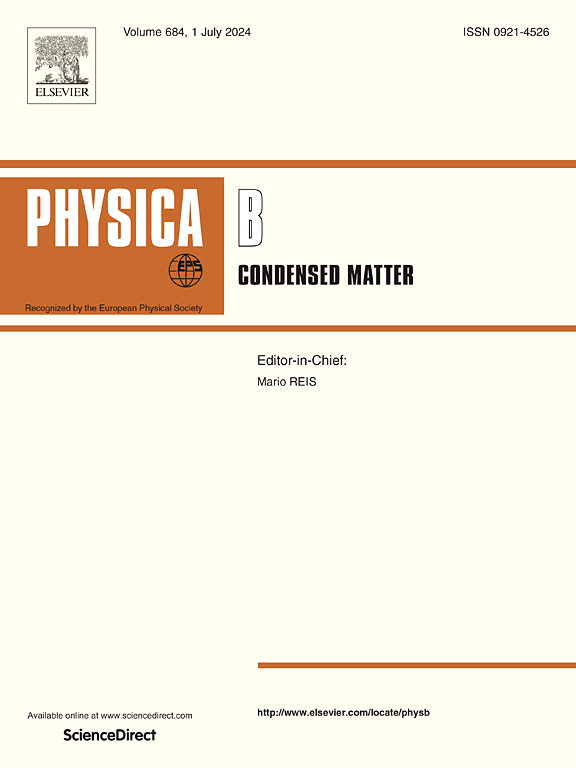迈向高效光伏技术:MASnI3 和 FASnI3 双吸收包晶太阳能电池的最佳转换效率达到 28
IF 2.8
3区 物理与天体物理
Q2 PHYSICS, CONDENSED MATTER
引用次数: 0
摘要
由于 MASnl3 和 FASnl3 的特性和最佳带隙值,它们被选为吸收材料,通过协同工作提高电荷分离效率和光吸收率。FASnI3 的带隙为 1.41 eV,可提高光子利用率并扩大光谱覆盖范围,而 MASnl3 的带隙为 1.30 eV,可作为主要吸收体。吸收器可有效捕捉更广泛的入射光谱,从而提高性能。本研究通过模拟对 MASnl3 和 FASnl3 双吸收器包晶体太阳能电池进行了广泛研究。这项研究通过评估体阱密度水平,深入探讨了吸收层厚度和掺杂厚度对电池性能的影响。当 MASnI3 厚度为 500 nm、FASnI3 厚度为 300 nm 时,最佳配置为 PCE = 28.06 %、VOC = 1.07 V、JSC = 30.74 mA/cm2 和 FF = 85.23 %。此外,降低块体和界面缺陷密度可显著提高器件的性能。这些结果表明,基于 MASnl3 和 FASnl3 的太阳能电池在未来的实验和商业应用中都有可能用于太阳能技术的进步。本文章由计算机程序翻译,如有差异,请以英文原文为准。
Toward high-efficiency photovoltaics: MASnI3 and FASnI3 double absorber perovskite solar cells with optimized conversion efficiency of 28 %
Due to their properties and optimal bandgap values, MASnl3 and FASnl3 have been chosen as absorber materials to enhance charge separation efficiency and light absorption by working together collaboratively. FASnI3, with a bandgap of 1.41 eV, increases photon utilization and widens the spectral coverage range, while MASnl3, with a bandgap of 1.30 eV, serves as the primary absorber. Absorbers enhance performance by effectively capturing a broader range of incoming spectra. This study extensively examines MASnl3 and FASnl3 double absorber perovskite solar cells through simulations. This research delves into how the thickness of the absorber layer and doping thickness affect the performance of cells by assessing bulk trap density levels well. The optimal configuration is achieved by having PCE = 28.06 %, VOC = 1.07 V, JSC = 30.74 mA/cm2 and FF = 85.23 % with a 500 nm thickness of MASnI3 and a 300 nm thickness of FASnI3. Furthermore, diminishing bulk and interfacial defect densities significantly improves the device's performance. These results show that solar cells based on MASnl3 and FASnl3 have the potential for use in solar power technology advancements, both in experiments and commercial applications, in the future.
求助全文
通过发布文献求助,成功后即可免费获取论文全文。
去求助
来源期刊

Physica B-condensed Matter
物理-物理:凝聚态物理
CiteScore
4.90
自引率
7.10%
发文量
703
审稿时长
44 days
期刊介绍:
Physica B: Condensed Matter comprises all condensed matter and material physics that involve theoretical, computational and experimental work.
Papers should contain further developments and a proper discussion on the physics of experimental or theoretical results in one of the following areas:
-Magnetism
-Materials physics
-Nanostructures and nanomaterials
-Optics and optical materials
-Quantum materials
-Semiconductors
-Strongly correlated systems
-Superconductivity
-Surfaces and interfaces
 求助内容:
求助内容: 应助结果提醒方式:
应助结果提醒方式:


